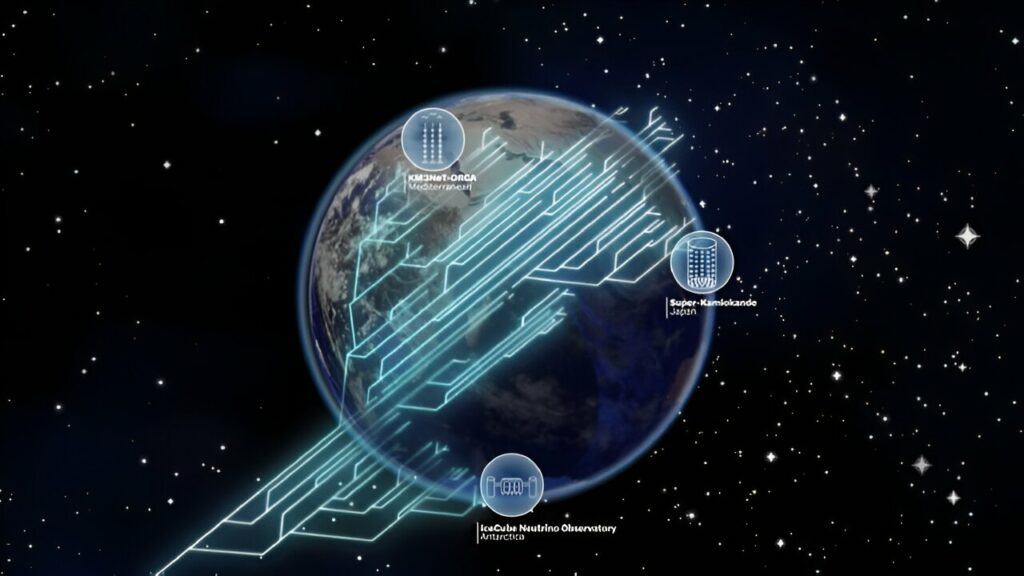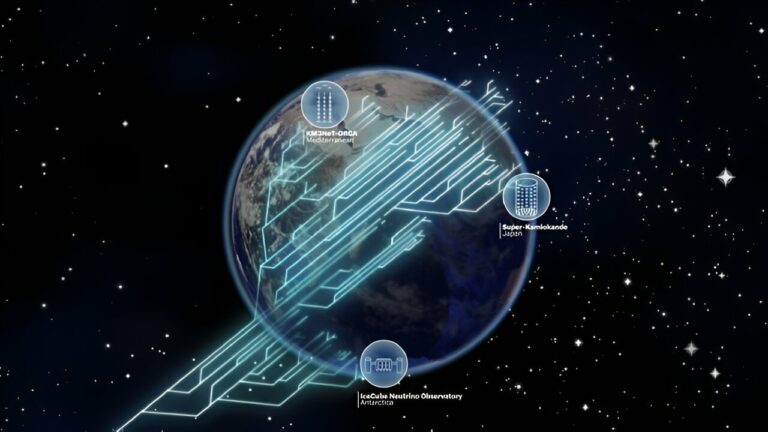The arrangement of neutrino masses may become apparent through measurements of those generated in the Earth’s atmosphere.
A team of physicists, including three from Harvard University’s Department of Physics and Laboratory for Particle Physics and Cosmology, and one from the University of Liverpool, has uncovered evidence suggesting that further measurements of neutrinos generated in Earth’s atmosphere could potentially unveil the ordering of the three types of neutrino masses.
In their paper, featured in the journal Physical Review X, C. A. Argüelles, I. Martínez-Soler, M. Jin, and P. Fernández detail their analysis of the anticipated sensitivities of current and upcoming water/ice-Cherenkov atmospheric neutrino experiments in relation to the oscillations of the three types of neutrinos.

Josh Spitz, a physicist affiliated with the University of Michigan, has authored a News & Views piece in Nature summarizing the team’s work on this innovative project. Neutrinos, sub-atomic particles with three known varieties—electron-neutrino, muon-neutrino, and tau-neutrino—are believed to have their type determined upon creation. These particles can be generated in various ways, such as during a supernova or other significant celestial events.
Remarkably, they can undergo changes from one type to another, a phenomenon known as quantum mixing, particularly when traversing through a celestial body like a planet. Scientists have been investigating neutrinos with the anticipation that such studies will contribute to unraveling major unresolved mysteries in physics, including the nature of gravity and dark matter. The team behind this new initiative emphasizes that advancing precise measurement techniques for neutrinos would enhance our understanding of quantum mixing. One of the primary objectives is to ascertain the masses of the three types of neutrinos.
Physicists explore neutrinos through various methods, including their generation using particle accelerator colliders, observation in nature, and the examination of their generation in Earth’s atmosphere when cosmic rays collide with atmospheric atoms. The research team has specifically directed their focus on the latter method. Typically, ongoing efforts to investigate these neutrinos involve constructing water or ice chambers equipped with highly sensitive photodetectors capable of capturing neutrinos during collisions with atoms in the tank.
By analyzing the light patterns emitted during these collisions, researchers can discern the type of neutrino, its energy level, and the distance it traveled before the collision occurred. Upon scrutinizing a substantial sample of such collisions and the corresponding data, the research team has identified an accumulation of information at a rate that suggests the potential for determining the masses of the three types of neutrinos by the year 2030.




0 Comments